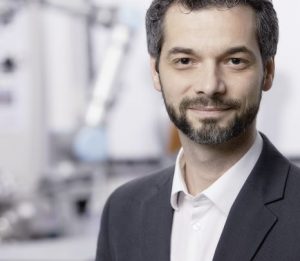Heart failure (HF) is the leading cause of death in Western countries and increasingly challenged by the shortage of donor organs.
Contemporary mechanical circulatory support (MCS) devices promote survival and improve quality of life for many HF patients. Rotodynamic blood pumps (RBP) used as left ventricular assist devices (LVADs) constitute the largest proportion of clinically used MCS devices. Durable LVADs support the failing heart by pumping blood from the ventricle to the aorta, thereby reducing the ventricular workload. The success of available RBP systems is tainted by severe hemocompatibility related adverse events, such as bleeding events and thromboembolic complications. Only 20% of all RBP recipients remain free from such life threatening major adverse events, one-year post-implantation.
To date, the medical device industry has focused primarily on the development of LVADs for the adult population. Currently, there is no clinically approved durable RBP in the medical sector that is specifically designed for pediatric use.
OPTIFLOW 3D aims at the development of a novel two-stage rotodynamic blood pump for pediatric patients.
New ceramic materials and 3D manufacturing processes (3D printing and 3D NIL) are used to optimize flow conditions with the aim of significantly reduced blood trauma, thrombogenicity and associated hemocompatibility-related adverse effects. Ceramic 3D printing, combined with precise monitoring of the shape and surface, will permit enhanced control of complex geometries and corrections of any shrinkage during sintering, helps to increase the reliability of the entire process chain.
The 3D-NIL surface functionalization aims to increase the surface quality and to optimize the hydrodynamics and cell growth properties by means of nano- and microstructures (e.g. riblets or similar) mastered by two-photon polymerization 3D printing (2PP). Supported by advanced CFD flow simulations of the near wall flow conditions and subsequent experimental validation, with iteratively optimized blood pumps as well as thrombus-on-a-chip devices, OPTIFLOW 3D will provide unprecedented insights into health effects of microstructured surfaces regarding hemocompatibility and endothelialization of additively manufactured ceramic materials. This technology bears the unique potential to enhance hemocompatibility of all blood-wetted cardiovascular devices.
The novel miniaturized pump approach addresses the unmet medical need of smaller patients in terms of anatomic compatibility. This technology may improve outcome not only in pediatric patients but also in patients of smaller body size. In addition, OPTIFLOW 3D not only develops the novel combined additive ceramic manufacturing and micro structuring process incl. algorithmic monitoring and control, but also builds a fundament for a number of valuable medical components which are in contact with blood or bloodlike fluids.
Profactor is the project coordinator …
Project Name
OptiFlow3D – Optimized Hydrodynamic Flow Behaviour by Selective Surface Structuring of Ceramic 3D Printed Rotodynamic Blood Pumps
Funding
Produktion der Zukunft, Produktion der Zukunft, PdZ – 2021 – https://projekte.ffg.at/projekt/4303675
Duration
01.04.2022 – 31.03.2025
Project Partners
- UpNano GmbH – http://www.upnano.at
- Lithoz GmbH – http://www.lithoz.com
- Bionic surface technologies GmbH – http://www.bionicsurface.com
- Medizinische Universität Wien – http://www.meduniwien.ac.at
- AIT Austrian Institute of Technology GmbH – http://www.ait.ac.at


